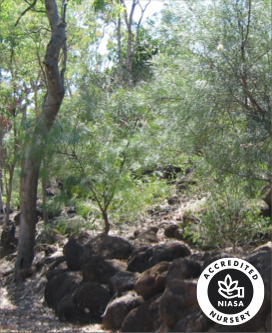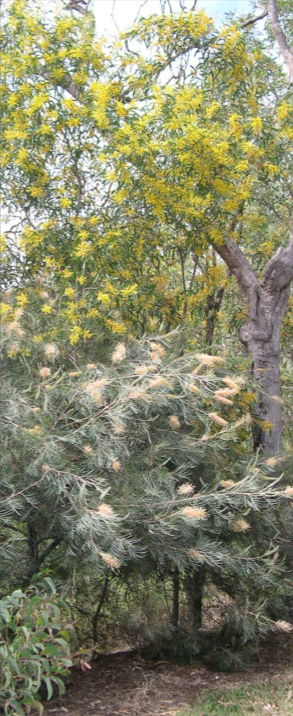Local North Queensland information for Local North Queenslanders.
Establishing a planting on sites such as river banks, steep slopes, and amongst existing trees can be very difficult…
 These situations often call for normal rules to be broken, compromises to be made, and a great deal of commonsense to be applied.
These situations often call for normal rules to be broken, compromises to be made, and a great deal of commonsense to be applied.
The secret is in understanding what you are doing – i.e. make sure you understand the principles of achieving good plant growth in normal situations, and adapt these principles to your site. If you forge ahead trying to blindly follow a set of hard and fast rules, you will undoubtedly come to grief.
Principle No. 1
Plants require well prepared, loosened soil if they are to grow well. Post-hole diggers are quite unsuitable in normal situations. The best solution is usually to use a machine such as a dozer to rip up the ground.
Obviously you cannot do this on a steep slope or river bank, as you run the risk of the soil eroding away. As a last resort you can dig holes by hand, but only do this when you have exhausted all possibilities of using a machine. Basically, a machine (any machine!) beats human effort every time.
Try compromise! For instance, in many situations it may be possible to use a post-hole digger in an unconventional manner. Instead of digging one deep hole, dig 3 or 4 shallower holes to create a loosened area of approximately 1 metre square for each plant. Then knock the hard sides in with a crowbar so that the roots can penetrate the surrounding soil.![]()
If the slope is not too steep, hire a dingo with post-hole attachments.
Principle No. 2
‘Pioneer’ species such as Sarsarparilla and Bleeding Heart should not be included in normal plantings as they are so aggressive that they snuff out all surrounding plants.
Pioneers can therefore be used in very difficult sites to bind eroding soil, and to shade out aggressive guinea grass and weeds.
So, if you’re quite sure that nothing else will do the job, plant pioneers! Your planting will not be very exciting, but at least it is better than nothing.
Some people believe that a natural forest will regenerate underneath pioneers from seed dropped by birds, but this is usually not true. For a start, you will only get species with fruit eaten by birds, and secondly most seedlings will be quickly snuffed out by the pioneers.
Principle No. 3
It is extremely difficult to establish young plants in the vicinity of existing mature trees. The reasons are quite simple: the existing trees cast shade (plants need light to grow), they grab all the water and nutrients before the young plants have a chance, and the ground is usually hard. In these circumstances you have to lower your expectations of plant performance – they will never grow as well as the same plants in a conventional planting.
Nevertheless, you can achieve reasonable results by digging as big a hole as possible (don’t be afraid to cut roots of the big trees – they’ll hardly notice it), and nurturing the young plant with fertiliser and water.
Principle No. 4
Grass and weeds severely inhibit the growth of trees and shrubs. In a conventional planting, grass and weeds should be totally eliminated from the site before you start planting. On steep slopes however, you may need to work at this gradually so as not to create an erosion problem. Nevertheless, it is absolutely essential that you keep the immediate area around each new plant clean by a combination of hand weeding, thick mulch, and appropriate applications of weedicides.
Plant selection:
Selection of suitable species is quite crucial in difficult sites. However, there is no such thing as a ‘magic list’, since appropriate species vary from site to site. When you discuss your situation with us, we will draw up a list especially suited to your site. We will also sort the plants into categories for you so that they are easily placed in the correct position on site. For instance, for river banks, you will need to place water-loving species close to the water line where flooding may occur.


